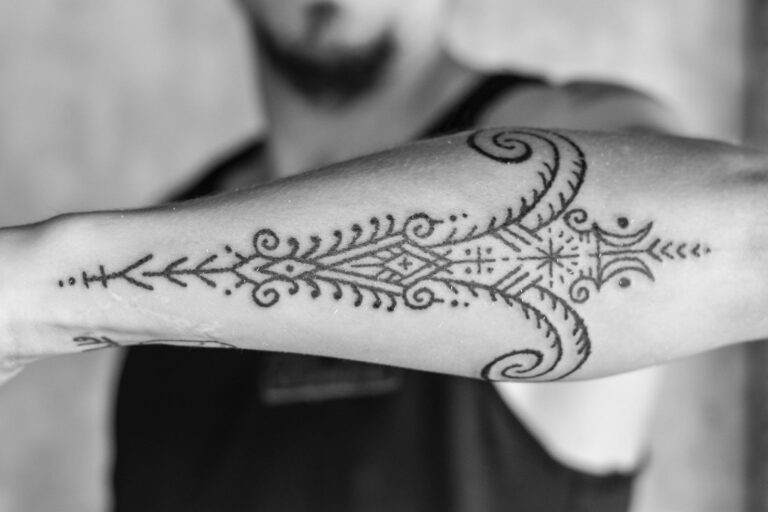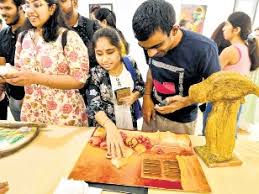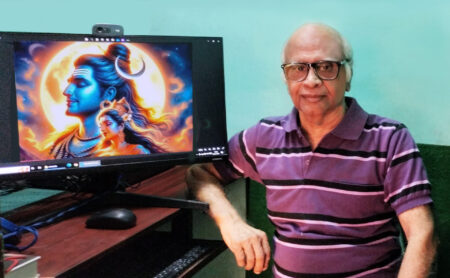Making and removing tattoos account for a $4 billion market. Indeed, the humble tattoo has gone a long way from its humble origins in Egypt.
Winston Churchill and Theodore Roosevelt had it. So did Thomas Alva Edison and George Orwell. In all likelihood, many of the N13 readers will have one on them. Well, before you let your imagination run amok, let’s tell you we’re talking about tattoos here. Tattoos are so popular that they command an economy that’s worth over $4 billion today. Tattoo making and removal are stand-alone business activities now. From Japan to Britain to New Zealand, (home to the insanely popular Maori tattoos), almost every country has its own version of tattoo making.
Tattooing has an interesting story of evolution. Humans have been marking themselves with tattoos for several hundreds of years now. Many theories exist on the origins of the omnipresent tattoo. Historians say we can trace back the origins of tattoos to ancient Egypt, which is generally agreed as the birthplace of hand-poked tattoos. Looking at some mummies and similar evidence, archaeologists and anthropologists had earlier suggested Egypt would have started its tattooing culture in 2000 BC. But latest studies, especially the ones that derived their lessons from analysing Ötzi the Iceman, the 5,300-year-old Mummy found on the Italian-Austrian border in 1991, suggest that the culture could be 5,200 years, or more, old.
Like most interesting things that originated in Egypt, the tattoo also spread its influence across the globe, becoming popular among, among others, political resistance groups, rebel cultures, mafias of many hues, gangster mobs, musicians and commoners. Today, it commands a $4 billion economy globally, with tattooing and tattoo removal providing employment to millions of people living in geographies such as the US, the UK, Brazil, India as well as territories such as the Solomon Islands or Bali or New Zealand.
Women and tattoos
Even though popular references on tattoos usually associate them with men, especially the more-masculine ones, tattoos share a curious relationship with the female body. Research suggests that even the Egyptian mummies of females had tattoos on the bodies and limbs. Female mummies that belong to 1200 BC and 1300 BC had tattoos on their thighs. As author Beverly Yuen Thompson observes in her book Covered in Ink: Tattoos, Women and the Politics of the Body, tattooing is still a male-dominated profession and female tattoo artists face stigma and discrimination even in seemingly modern markets.
Yuen Thompson points out that tattoos are getting more recognition today, especially from women, from the days they were billed as part of the lifestyle of “sailors, gang members, criminals, the mentally ill, and sexually deviant women”. Even though ancient and medieval history is replete with reference to tattooing, the art of inking the human body became popular only in the 1960s, thanks to the social and cultural movements of the era. The advent of counter cultures across the globe provided enough room for the art of tattooing to grow without hesitations especially given that such cultural practices gave a lot of importance to body modification. Today, a lot of women sport tattoos,
In her book, Bodies of Subversion: A Secret History of Women and Tattoo, writer Margot Mifflin talks about Maud Wagner, who we know today as the first woman tattooist. Folklore has it that Wagner in 1904 “traded a date with her tattooist husband-to-be for an apprenticeship”. Wagner used only her hands and needles to ink tattoos on her clients; she wasn’t fond of the tattoo machine. Even though she was a recognised tattoo artist, Wagner didn’t get the attention she deserved. She was often used as bait to attract potential clients, thanks to her heavily tattooed body.
Getting inked, more and more
Tattoos became an integral part of pop culture by the 1980s and 1990s. Markets such as the US and the UK saw a mushrooming of tattoo shops and carnivals. Many historians consider New York City as the birthplace of modern tattoos. In 1891, modelled after Edison’s electric pen, the first electric rotary tattoo machine was invented in New York City. In the mid-19th century, the city saw its first professional tattoo artist Martin Hildebrandt set up a tattoo shop for Civil War soldiers (purely for identification needs). And the rest is history.
Studies suggest that the US today has nearly half of its population wearing tattoos (46 per cent, in 2018). That said, the US is not the leader in this game. It’s Italy. More than 48 per cent of Italians have at least one tattoo, and the number is only growing. According to the survey, Sweden follows Italy with a 47 per cent tattoo demography.
Japan has a special place in the history of tattooing. Those who’ve studied tattoos say modern Japanese tattoos are impressive works of art. Still, tattoos were declared illegal in Japan in 1868, till 1948. Even today, tattoos bear several shades of social stigma in Japan owing to the fact that tattoos have been popular among the yakuza mafia and other criminal gangs. Japan made tattoos legal in 1948 when an adviser of General Douglas MacArthur became a friend of a popular tattooer and used their clout to lift the ban on irezumi (tattoo in Japanese).
Equally important are the tattoos from regions and cultures such as Polynesian islands, such as Samoa, Māori and more. Interestingly, the tattooists of Samoa and Māori were making body arts even during ancient times much before modern tattooing tools were in vogue. Cultures in Africa also have tattoos. Popular here are the “fine dots” on the faces of the Berber women in Algeria, the detailed tattoos of Wodabe men in Niger and the tiny crosses on the inner forearms of Egypt’s Christian Copts.
More ink in the bottle…
Today, tattoos are popular among the rich and famous as well. But that wasn’t the case always. It was during the Victorian period (19th century) that tattoos became a fashion statement for people who are generally called “socialites”. King Edward VII had a fascination for body art; he got himself inked during a trip to Jerusalem in 1862. His sons Prince Albert and Prince George (King George V, later) got dragons inked on them during their trips to Japan by Hori Chyo, “the Shakespeare of tattooing.” When the British royals embraced it, their fans across the Atlantic wasted no time to take to tattooing. Soon, New York’s high society started inking their bodies ‘fast and furious’.
In India, historical records and studies suggest that the country has a rich tradition of tribal body art, which unfortunately didn’t gain mainstream popularity. Folk and tribal art forms contain several such depictions, especially in north and north-western India. Tattooing cultures are popular among the Bhils and Santhals in central India, the Kanbis and Warlis in Gujarat, and among the Banjaras of Rajasthan, highlight a study by Sarah Haq of Ambedkar University Delhi. The wandering tribe of the Kutch, the Rabaris, use tattoos to beautify their women, notes Haq. The Malagasy-Nias-Dravidians of the Malabar Coast were using ‘medicinal tattoos’ as cures for physical ailments. Up north-east, the Apatanis, Wanchos, the Noctes and the Mijis of Arunachal Pradesh and the Zommi-Chinn tribes and the Meithi clans of the Senapati hills have been practising tattooing for generations.
In spite of such rich traditions, tattoos are still stigmatized in India where the art is a fledgeling, minuscule market. Tattoo fans and practitioners hope the popularity of the art through social media platforms such as Instagram and Pinterest and the rise of the new rich in the country will make the market boom, enabling the art of tattooing to get out its long-standing stigma in this part of the world.




